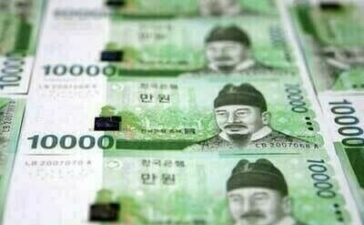What’s going on here?
Asian currencies climbed on Friday as weaker US labor figures stoked hopes for a Federal Reserve rate cut, with the South Korean won leading the rise after a local rate reduction.
What does this mean?
The US labor reports rippled through the currency markets, reigniting confidence in a potential Federal Reserve rate cut. This optimism countered weekly losses for several Asian currencies, notably boosting the South Korean won by 0.6% after the Bank of Korea’s rate cut decision. While the Indonesian rupiah struggled throughout the week, currencies like the Philippine peso and Thai baht found stability. Stronger US job data from last week, though, buoyed the dollar, prompting capital outflows from Indonesia and Thailand. Consequently, Asian equity markets showed mixed reactions, with gains in Jakarta, Bangkok, and Taipei, but declines in Manila and Shanghai. Looking ahead, regional central bank meetings will be crucial, with the Philippines contemplating a rate cut, while Thailand, Indonesia, and Singapore are expected to hold steady.
Why should I care?
For markets: Currencies on the rise.
The rebound in Asian currencies presents fresh opportunities for investors focused on emerging markets. With expectations of a US rate cut growing, these currencies could attract more interest, especially if regional central banks align their monetary strategies. Keep an eye on the Philippine peso and South Korean won as potential indicators for broader market shifts.
The bigger picture: Global economic ties and tensions.
Regional actions in Asia are being influenced by broader geopolitical dynamics, like improving China-Japan relations against a backdrop of significant international meetings. Concerns about luxury goods facing trade measures between China and the EU have been downplayed, suggesting current financial strategies may be geared towards stability and minimizing new tensions.
















